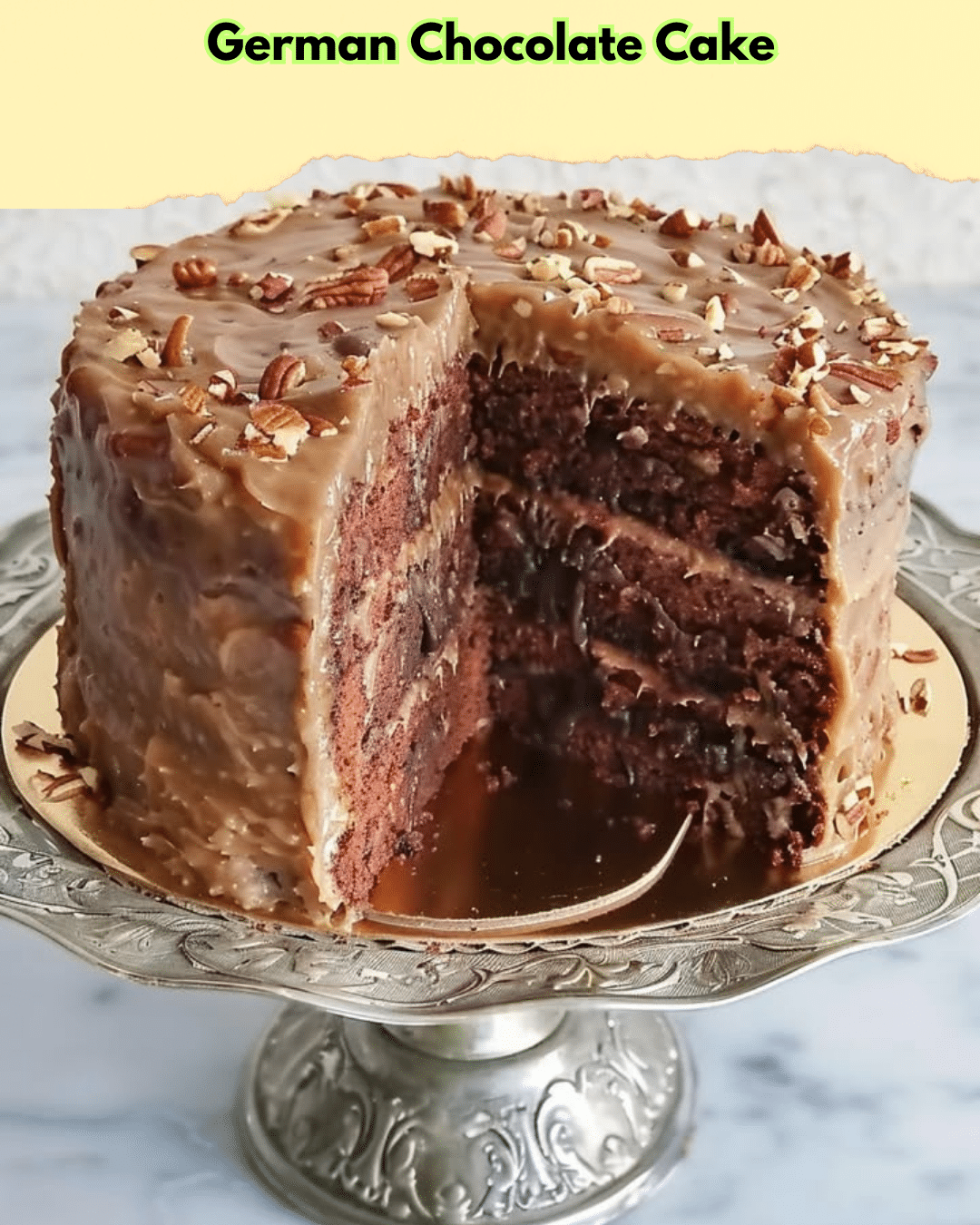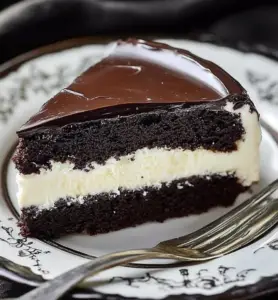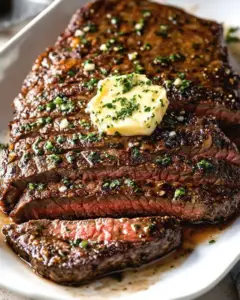German Chocolate Cake: A Decadent Delight
Dive into the irresistible world of German Chocolate Cake, a rich and decadent dessert that’s perfect for special occasions or simply indulging your sweet tooth. Known for its distinctive layers of moist chocolate cake paired with creamy coconut pecan frosting, this classic treat is a favorite for those who love the sumptuous blend of flavors and textures. Each bite of German Chocolate Cake offers a comforting mix of sweetness, nuttiness, and chocolatey goodness, making it an unforgettable culinary experience.
Quick Recipe Highlights
– Flavor Profile: The German Chocolate Cake boasts a unique flavor combination of rich, deep chocolate paired with a sweet, buttery coconut and pecan frosting.
– Texture: This cake’s texture ranges from the soft and moist crumb of the chocolate layers to the creamy, slightly crunchy frosting that adorns the top and between the layers.
– Aroma: Smell the decadent aroma of chocolate mingling with hints of coconut and pecans, creating a delectable scent that beckons with every serving.
– Visual Appeal: Visually stunning with its layered structure, the golden-brown frosting flecked with pecan pieces contrasts beautifully against the dark chocolate cake layers.
– Skill Level Needed: Intermediate baking skills are perfect for this cake, as it involves making a traditional cake base and carefully preparing a cooked frosting.
– Special Equipment: You’ll need standard baking essentials, such as cake pans, a mixer, and a saucepan for the frosting.
Recipe Overview
– Difficulty Level: The difficulty is at an intermediate level, suitable for bakers who have mastered the basics and are ready to advance. The task of preparing the frosting from scratch requires a watchful eye and attentiveness to achieve the right consistency without burning.
– Category: This recipe falls under the beloved category of classic desserts, shining in the realm of comfort food and bringing joy across generations.
– Cuisine: Rooted in American culinary traditions, the German Chocolate Cake has evolved from its origins yet retains the nostalgic qualities that have made it a staple.
– Cost: The ingredients are moderately priced, with the key elements—chocolate, coconut, and pecans—being the primary contributors to the overall cost.
– Season: Ideal for any time of the year, the cake’s comforting flavors make it especially suitable for festive celebrations and winter gatherings.
– Occasion: Perfect for birthdays, anniversaries, or holiday celebrations, this cake is crafted to impress and satisfy crowds.
Why You’ll Love This Recipe
From the first bite, the German Chocolate Cake appeals with its celebrated balance of flavors and irresistible texture. The rich chocolate layers marry beautifully with the sweet and creamy coconut pecan frosting, creating a delightful contrast in every mouthful. It’s a cake that provides both visual and gustatory satisfaction, leaving you and your guests with a memorable dining experience.
In terms of convenience, this cake can be prepared with a bit of advance planning, allowing the baker the flexibility to work efficiently even in a tight schedule. The frosting, which is made on the stovetop, can be prepared ahead of time, enabling a smooth assembly when ready to serve.
Nutritionally, while this cake is a treat, the walnuts and pecans contribute healthy fats and proteins, and the coconut brings its natural, wholesome sweetness. Though certainly a dessert, being mindful of portion sizes allows for enjoyment without excess.
Socially, serving German Chocolate Cake as a centerpiece at your event encourages conversation and delight over shared memories of this classic treat. It’s a dessert that brings people together, adding joy and satisfaction to any gathering.
Despite its rich ingredients, this cake is surprisingly cost-effective. By sourcing your chocolates and nuts in bulk or on sale, you can make it for less than the cost of purchasing a similar high-end dessert, making it a budget-friendly choice for large gatherings.
Historical Background and Cultural Significance
The beloved German Chocolate Cake actually originates from America, not Germany, with its name stemming from an English-American chocolate maker named Samuel German. In the mid-19th century, German developed a sweet chocolate variety for the Baker’s Chocolate Company, intending to enhance baking recipes.
The cake gained significant popularity in the 1950s when a Dallas newspaper published the recipe as “German’s Chocolate Cake,” leading to widespread interest and misinterpretation of its origins. Despite the misconception, the cake has retained large cultural significance as an American classic, often featured in celebrations and family desserts.
Over time, the recipe evolved, with bakers adding their twists, such as extra layers, diverse frostings, and additional embellishments, all while keeping the core of the cake—a decadent combination of chocolate and coconut pecan frosting—intact. It stands today as a testament to the creativity and adaptability of American home bakers.
Regionally, variations exist across the United States. Some bakers prefer a simpler, classic presentation, while others add layers of frosting between each cake layer for extra indulgence. Regardless of the variations, the heart of the cake remains the symbiotic relationship between chocolate, coconut, and pecans.
Ingredient Deep Dive
**Chocolate**: The star of this dessert is, without a doubt, the chocolate. With roots in Mesoamerican cultures, chocolate has been prized for its rich flavor and mood-enhancing properties. In German Chocolate Cake, the use of a mild sweet chocolate provides a balanced sweetness and depth, complementing the decadent frosting. For best results, select high-quality chocolate, storing it in a cool, dry place to preserve its integrity. If you’re out of classic German’s Sweet Chocolate, semi-sweet or dark varieties can serve as excellent substitutes.
**Coconut**: Coconut brings a tropical element to the German Chocolate Cake, contributing flavor, texture, and moisture. Renowned for its versatility and nutritional benefits—being rich in fiber and healthy fats—it’s imperative to choose fresh, unsweetened shredded coconut whenever possible. Properly storing coconut in an airtight container will keep it from drying out. If coconut isn’t readily available, almond meal or finely chopped nuts can be a creative alternative.
**Pecans**: Pecans, native to the southern U.S., infuse the frosting with their creamy texture and buttery flavor, offsetting the sweetness beautifully. Packed with vitamins, minerals, and antioxidants, pecans add a nutritious element to the frosting. When selecting pecans, look for those with a fresh aroma and crunchy texture. To maintain freshness, store them in the fridge or freezer, preventing absorption of other aromas. Walnuts can stand in place of pecans if needed, maintaining the nutty appeal.
Common Mistakes to Avoid
1. Overbaking the cake layers can lead to dryness; always check for doneness slightly earlier than the suggested time using a toothpick.
2. Failing to cream the butter and sugar adequately can result in a dense cake; take time until the mixture is light and fluffy.
3. Adding eggs too quickly may cause the batter to split; incorporate them one at a time for a smooth batter.
4. Pouring frosting directly onto hot cake layers will cause it to melt; ensure the cake is fully cooled before frosting.
5. Overcooking the frosting leads to a grainy texture; maintain constant stirring and monitor heat closely.
6. Not allowing the frosting to cool and thicken slightly before spreading can result in a messy application.
7. Using low-quality chocolate diminishes the rich flavor; always use high-grade chocolate for the best outcome.
8. Skipping parchment paper lining can cause sticking, ruining the cake’s appearance.
9. Failing to toast pecans diminishes their flavor potential; a light toast enhances their nuttiness.
10. Storing the cake uncovered can lead to drying; always cover and refrigerate it to maintain moisture.
Essential Techniques
**Creaming Butter and Sugar**: Properly creaming the butter and sugar creates a light, airy cake base, setting the foundation for a delicate and fluffy texture. Master this technique by ensuring your butter is at room temperature, and beat on medium speed until the mixture is pale and slightly doubled in volume. Avoid under-beating, which leads to a dense cake.
**Cooking Coconut Pecan Frosting**: Achieving the perfect frosting consistency requires both patience and attention. Stirring constantly while cooking keeps the egg yolks from scrambling and the sugar from crystalizing. Look for a golden, thickened consistency that holds together but spreads smoothly. Avoid high heat, which can make the frosting grainy.
**Layering and Frosting**: The technique of layering requires precision for aesthetic appeal. Position your cake layers carefully, evenly spreading the frosting in between each one. Aim for an even distribution, avoiding excessive pressure that might compress the cake. A turntable can assist in achieving a professional finish.
Pro Tips for Perfect German Chocolate Cake
1. Use room temperature ingredients for the batter to ensure even mixing and a stable emulsion.
2. Chill the cake layers briefly for ease of frosting application, preventing the frosting from sliding off.
3. If substituting chocolate types, adjust sugar levels accordingly to maintain balance.
4. Enhance coconut flavor by lightly toasting the flakes before adding them to the frosting.
5. Add a pinch of salt to the frosting to amplify flavors and cut through sweetness.
6. For a decorative finish, garnish with extra toasted coconut and a sprinkle of chopped pecans.
7. Allow the cake to sit at room temperature before serving; cold cake can mute flavors.
8. Practice patience with the frosting; rushing can lead to an unstable or unfinished appearance.
Variations and Adaptations
**Regional Variations**: In the southeastern U.S., you might find German Chocolate Cake with additional layers of ganache for an extra chocolate punch. Elsewhere, adding a dash of bourbon or rum to the frosting offers a spirited twist.
**Seasonal Adaptations**: In winter, consider incorporating warming spices like cinnamon or nutmeg into the batter to enhance the seasonal cheer. Summer adaptations might include a hint of orange zest in the frosting for a refreshing burst.
**Dietary Modifications**: Create a gluten-free version by utilizing gluten-free baking flour; ensure it includes xanthan gum for structure. For a dairy-free alternative, substitute with plant-based butter and coconut milk in both the cake and frosting.
**Flavor Variations**: Incorporating espresso powder into the batter can deepen the chocolate flavor. Alternatively, a touch of almond extract in the frosting can highlight the nutty profile of the pecans.
**Texture Modifications**: For added chew, incorporate finely chopped dried fruits like cherries or apricots into the frosting. For a softer mouthfeel, blend toasted coconut into a paste before integrating it into the frosting.
**Presentation Alternatives**: Consider creating individual-sized German Chocolate cupcakes for portion-controlled servings, ideal for parties. Drizzle with extra chocolate for an elegant finish.
Serving and Presentation Guide
Proper presentation can elevate the German Chocolate Cake from delightful to unforgettable. When plating, use a sharp knife to achieve clean-cut slices, wiping the blade between cuts to maintain precision.
**Plating Techniques**: Serve slices on a simple, light-colored plate to showcase the cake’s rich hues. Pair with a spun sugar garnish or edible flowers for an added touch of elegance.
**Garnishing Ideas**: Sprinkle additional toasted coconut or grated chocolate over the top for enticing texture and visual appeal. Fresh berries can contrast and highlight the rich brown tones beautifully.
**Traditional Accompaniments**: A dollop of freshly whipped cream or a scoop of vanilla ice cream complements this dessert well, both in flavor and texture.
**Modern Serving Suggestions**: Present the cake with a shot of espresso or a craft cocktail for refined pairing experiences, enhancing the flavors while providing a brisk counterbalance.
**Temperature Considerations**: Ensure the cake is served at room temperature for optimal flavor and texture, avoiding the dullness that comes with refrigeration.
**Portion Control Tips**: For larger gatherings, consider cutting the cake into bite-sized squares, transforming it into a delectable finger food perfect for mingling.
Wine and Beverage Pairing
Selecting the right beverage can elevate the consumption experience of your German Chocolate Cake. Here’s how to pair it adeptly:
**Wine Pairings**: Opt for a well-rounded red wine like a California Zinfandel or a Port, which can complement the richness of the coconut and pecan frosting while holding up to the chocolate’s intensity.
**Non-Alcoholic Alternatives**: Dark roasted coffee or sweet herbal teas (like rooibos) perfectly complement the cake’s sweetness. You might also try serving a fizzy ginger ale for a festive touch, offering a delightful contrast.
**Coffee/Tea Pairings**: A cup of espresso or a smooth, aged Bourbon-infused tea is an excellent choice, creating a warm and inviting experience after a hearty meal.
**Temperature Considerations**: Ensure beverages are served at their ideal temperatures: chilled for wines, piping hot for espresso, and appropriately steeped for teas.
**Serving Suggestions**: Offer small tastings alongside each cake slice, allowing guests to savor the combinations and discover their preferred pairings.
Storage and Shelf Life
To maintain the freshness and quality of German Chocolate Cake, proper storage is essential:
**Storage Methods**: Once assembled, transfer the cake to a lidded cake stand or airtight container to protect from drying and aroma absorption.
**Temperature Requirements**: Store the cake in a cool, dry place if consuming within two days. For prolonged freshness beyond three days, refrigeration is necessary.
**Container Recommendations**: Use a glass or BPA-free plastic container to seal in moisture and prevent exposure to other flavors or fridge odors.
**Signs of Spoilage**: Inspect for drying edges, molding, or unusual odors as a sign of spoilage; this suggests the cake is past prime consumption.
**Reheating Instructions**: To refresh refrigerated cake, allow slices to reach room temperature before serving. Avoid reheating, which may affect frosting consistency.
**Freezing Guidelines**: For longer storage, wrap individual slices in plastic followed by foil and freeze. When ready to eat, thaw slowly in the fridge overnight for best results.
Make Ahead Strategies
German Chocolate Cake can be an excellent choice for pre-planning:
**Prep Timeline**: The cake layers can be made and frozen up to a week in advance. Prepare the frosting a day ahead to ease the assembly process.
**Storage Between Steps**: Wrap cake layers securely in plastic wrap and refrigerate frosting in an airtight container to maintain freshness and texture.
**Quality Impact Assessment**: Preparing elements in advance does not diminish the cake’s quality, and in some cases, resting enhances the meld of flavors.
**Assembly Tips**: Allow the frosting to soften slightly to ease spreading. Use an offset spatula for smooth and even application.
**Reheating Guidelines**: Avoid reheating the cake; instead, allow it to come to room temperature before consumption to maintain taste and texture integrity.
**Fresh Element Additions**: Apply fresh garnishes like coconut shavings or shaved chocolate just before serving to heighten visual appeal.
Scaling Instructions
Scaling your German Chocolate Cake allows for the flexibility of any-sized gatherings:
**Halving the Recipe**: Reduce ingredient quantities proportionately, paying special attention to small amounts like baking soda or salt. Use smaller baking pans to maintain height and presentation.
**Doubling or Tripling**: Scale up ingredients directly, keeping an eye on batter consistency and frosting thickness. Use wider or multiple pans for even baking.
**Equipment Adjustments**: Larger batches may necessitate heavier mixing equipment to effectively blend the batter without overtaxing your tools.
**Timing Modifications**: Larger cakes generally require longer baking times; ensure doneness by inserting a toothpick until it emerges clean or with a few crumbs.
**Storage Considerations**: With increased quantity comes the need for larger storage containers while maintaining moisture and flavor.
Nutritional Deep Dive
**Macro Breakdown**: German Chocolate Cake is rich in carbohydrates and fats, providing substantial energy and indulgence per slice.
**Micronutrient Analysis**: The cake supplies notable amounts of vitamins like folate and minerals such as magnesium from the pecans and chocolate.
**Health Benefits**: Although a treat, beneficial fats from nuts and antioxidants in chocolate have heart-protective properties—indulging mindfully allows enjoyment of its nutritious elements.
**Dietary Considerations**: It’s prudent to balance dessert intake with physical activity to accommodate the caloric intake, especially for those mindful of dietary goals.
**Portion Analysis**: Serving the cake in smaller portions encourages moderation, making room for the enjoyment of other meal components.
**Weight Management Tips**: Sharing smaller slices maintains a balanced diet, allowing indulgence without excess, complemented by physical activity.
Dietary Adaptations
**Gluten-Free**: Replace traditional flour with a gluten-free blend and adjust liquids accordingly to maintain texture integrity.
**Dairy-Free**: Use coconut milk in the frosting and plant-based butter substitutes to recreate the classic taste without dairy.
**Vegan**: Substitute eggs with flaxseed meal or applesauce to accommodate vegan diets while retaining moisture and structure.
**Low-Carb**: Opt for sugar replacements like monk fruit sweetener and almond flour to reduce carbohydrate content, ideal for keto-friendly modifications.
**Keto**: Use coconut oil and erythritol to create a ketogenic version, maintaining the flavor profile while lowering glycemic impact.
**Paleo**: A paleo-friendly version involves harnessing nut flours and natural sweeteners, alongside coconut cream, for authentic taste compliant with the diet.
**Low-FODMAP**: Minimize certain nuts like almonds, substituting with walnuts or pecans that have lower FODMAP content.
Troubleshooting Guide
**Texture Issues**: If your cake turns out dense, check the freshness of your leavening agents and ensure thorough creaming of butter and sugar next time.
**Flavor Balance**: Overly sweet frosting can be tempered with a touch of salt or citrus zest to enhance contrast and save overly saccharine results.
**Temperature Problems**: If the cake is raw in the middle, your oven may require calibration. Test using multiple thermometers for consistent results.
**Equipment Challenges**: Lack of proper tools like a stand mixer might lead to inefficient batter mixing; try alternating mixing directions manually.
**Ingredient Substitutions**: Swap in mild vegetable oils when butter is unavailable to maintain moisture in cake layers.
**Timing Concerns**: Double-check cooking times if your cake is drying out—bake alongside another tray of water to keep airflow moist.
Recipe Success Stories
Community feedback emphasizes the nostalgic joy and sensory delight that arises when making and eating German Chocolate Cake. Many readers find success by incorporating personal touches such as bourbon-infused frostings or adding a sprinkle of sea salt to deepen flavor complexity. Adaptations have seen festive versions featuring candied cherry garnishes or citrus zest infused for summer occasions.
Reader suggestions often explore alternative decorating methods, sharing tips for elegant piping or rustic spread styles that maintain the cake’s homely charm. Photography lovers capture the golden frosted finish contrasted with rich, dark cake layers, creating a visual allure that complements the taste experience.
Frequently Asked Questions
Boost moisture by adding sour cream or yogurt to the batter or using cake flour for a finer crumb.
2. Can I make this cake ahead of time?
Yes, bake the layers ahead, wrap well, and freeze. Thaw completely before applying the frosting.
3. What makes German Chocolate Cake different from other chocolate cakes?
The unique coconut pecan frosting sets it apart, offering a distinct texture and sweet nuttiness.
4. Is there a substitute for pecans?
Walnuts or macadamia nuts make great substitutes, maintaining the desired crunch and flavor profile.
5. What type of chocolate should I use?
Opt for high-quality German’s sweet chocolate for authenticity, or substitute semi-sweet if preferred.
6. How do I know when the frosting is ready?
Once it’s thickened and spreads smoothly without running, remove it from heat, and cool before use.
7. Can this cake be made into cupcakes?
Absolutely, simply adjust baking time to 20-25 minutes, monitoring closely for a clean toothpick test.
8. Why is my frosting too runny?
Ensure it’s cooked long enough to thicken; cool to room temperature for better consistency before use.
9. How do I prevent cakes from sticking to pans?
Always line with parchment paper and apply a non-stick spray or butter before adding the batter.
10. Can I add more layers to the cake?
Additional layers are possible if baked evenly and cooled completely before stacking to support weight.
Additional Resources
Explore other classic dessert recipes that pair beautifully with the sophisticated complexity of German Chocolate Cake:
**Related Recipes**: Try out decadent options like Black Forest Cake or a traditional Tres Leches Cake, both offering layered indulgence.
**Technique Guides**: For beginner bakers, resources on mastering cake mixing techniques and frosting applications are invaluable.
**Ingredient Information**: Dive into deeper insights on chocolate’s history and regional types for expanded culinary knowledge.
**Equipment Recommendations**: Invest in quality bakeware and utensils to streamline the baking process for professional results.
**Seasonal Variations**: Consider adapting fruit-based desserts alongside German Chocolate Cake for balanced, seasonal menus.
Print
German Chocolate Cake
Description
A rich and indulgent chocolate cake with a coconut-pecan frosting that is perfect for special occasions.
Ingredients
For the Crust:
- 2 cups all-purpose flour
- 1 cup granulated sugar
- 3/4 cup unsweetened cocoa powder
- 1 teaspoon baking soda
- 1/2 teaspoon salt
- 1 cup buttermilk
- 2 large eggs
- 1/2 cup vegetable oil
- 2 teaspoons vanilla extract
- 1 cup boiling water
- 1 cup sweetened flaked coconut
- 1 cup chopped pecans
- 1/2 cup butter
- 1 cup evaporated milk
- 1 cup brown sugar
Instructions
1. Prepare the Crust:
- Preheat oven to 350°F (175°C). Grease and flour two 9-inch round cake pans.
- In a large bowl, mix flour, sugar, cocoa, baking soda, and salt. Add buttermilk, eggs, oil, and vanilla. Beat until smooth. Stir in boiling water and pour batter into prepared pans.
- Bake for 30-35 minutes. Meanwhile, to make frosting, bring coconut, pecans, butter, evaporated milk, and brown sugar to a boil. Stir constantly for 12 minutes, until thickened. Let cool slightly. Spread on cooled cakes.
Notes
You can customize the seasonings to taste.




